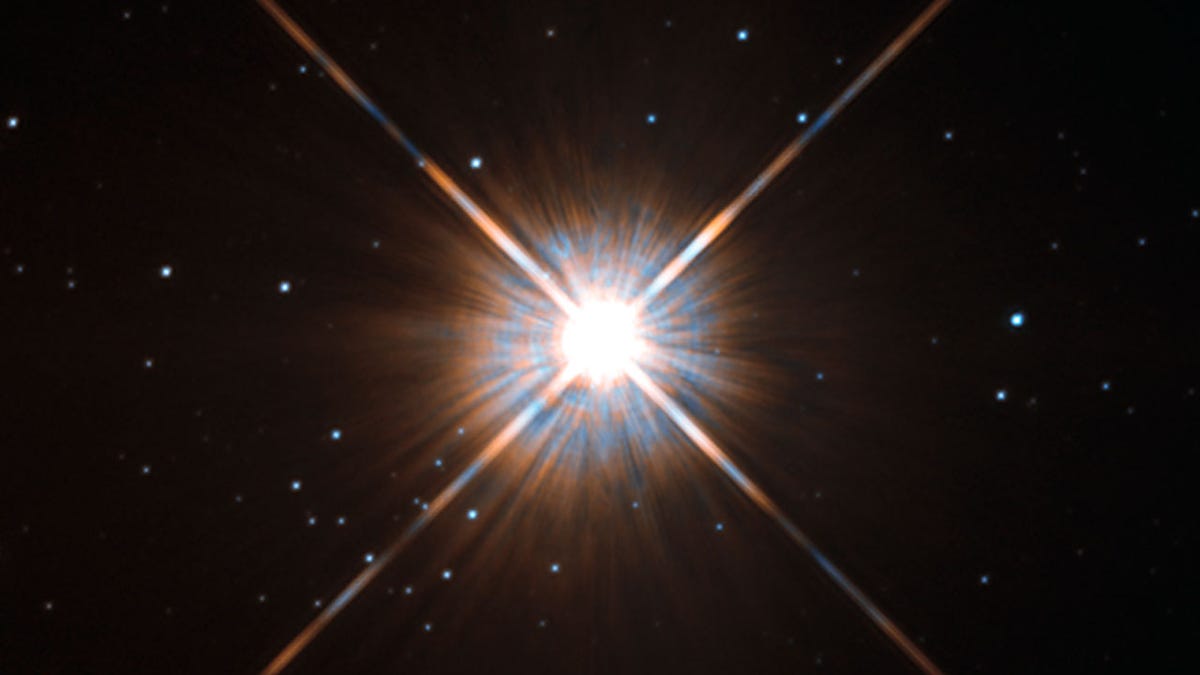 Why You Can Trust CNET
Why You Can Trust CNET What life would be like on an Earth-like planet around Proxima Centauri
News that a livable planet may be circling the sun's closest counterpart is exciting space fanatics, but such a place may have some major differences, too.
A team of astrophysicists will soon announce the discovery of an Earth-like planet around the nearest star beyond the sun, Proxima Centauri, Germany's Der Spiegel reported Friday, citing an anonymous source.
If true, this would be a big deal, as it's about as close as another planet like our own could possibly be at just four light-years away.
Proxima Centauri is different from our sun, though, and that means any potential Earth-like planets would still have some major differences from our home, too.
The key thing to understand about Proxima Centauri is that it's a red dwarf star closer in size to Jupiter than to our own sun. This means, to our eyes, visiting a planet orbiting the star would be like stepping into a world that appears in something like sepia tones or the "1977" filter on Instagram.
Proxima Centauri is older than the sun by a few hundred million years, which means there's been plenty of time for chemistry to support life and life itself to develop, in theory.
However, on the website for the Pale Red Dot project, author Paul Gilster wrote in January: "Like many younger M-dwarfs, Proxima is prone to sudden, violent flares, producing sudden changes in brightness to Earth observers and cascades of deadly particles for any life forms on a planet." (Perhaps not coincidentally, the Pale Red Dot team should have a peer-reviewed paper on the findings of their search for a planet around Proxima Centauri dropping any day now.)
Now, this doesn't mean life couldn't adapt and essentially evolve to have a killer level of natural sunscreen to survive Proxima's harsh flares, but it does mean we might wind up a little toasted if we visited in just our board shorts and flip-flops.
Because Proxima is so relatively small and dim, any Earth-like planet circling it would likely be orbiting very closely, even closer than Mercury's orbit of our sun. This makes it likely that such a planet would also become tidally locked with the same side always facing Proxima, similar to the way the same side of the moon is always facing Earth.
This fact alone would make a Proxima Earth very different from ours. One side of the planet would be permanently bathed in daylight, while the opposite side would be always dark and presumably pretty cold. Some areas would experience perpetual dusk and perhaps a gorgeous red ocher sunset that never ends.
The potential for life on such a planet depends on what sort of atmosphere, if any, exists. One study found (PDF) that a relatively thin atmosphere could be enough to create an environment where photosynthesis could take place. It's also possible to imagine a planet as dead and dry as Mars appears on one side, and as frozen as Pluto on the other.
Fortunately, one of Earth's biggest brains recently teamed up with some of our richest dudes to announce a plan to send a tiny spacecraft to the Centauri system (which also includes two brighter, larger Alpha Centauri stars in a binary system). In April, Stephen Hawking and Yuri Milner (with help from Mark Zuckerberg) announced their "Breakthrough Starshot" initiative to launch a "nanocraft" to travel at one-fifth the speed of light toward the Centauris. That's a 20-year trip one way.
We should soon have a better picture of whether there really is an Earth-like planet nearby. In addition to the Pale Red Dot initiative, the Hubble Space Telescope and the Canadian MOST (Micro-variability & Oscillations of STars) observatory have been investigating Proxima's environs of late.
If there is something there, then the next step will be to try to determine the likelihood that it's populated by aliens with wicked natural resistance to solar flares who never witnessed a daily sunrise or sunset.


